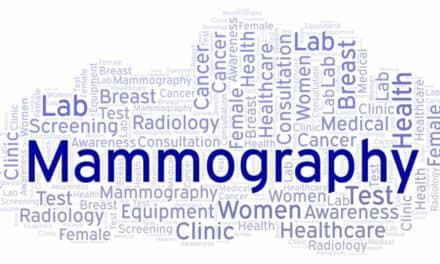A comprehensive study published in the Journal of the American College of Radiology (JACR) found racial disparities in the utilization of mammography screening overall, and specifically for digital breast tomosynthesis (DBT).
The study, “Outcomes by Race in Breast Cancer Screening with Digital Breast Tomosynthesis versus Digital Mammography,” reported breast cancer screening access, utilization and outcomes by race for 385,504 Asian, Black, and Caucasian women who underwent a total of 804,304 screening exams at 63 breast imaging facilities in the United States from January 2015 through January 2019. The study was commissioned by Hologic, Inc., a provider of breast cancer screening technology and manufacturer of 3D Mammography systems.
The findings are particularly concerning since research has shown that, despite having a similar breast cancer incidence rate, Black women are almost 40% more likely to die from breast cancer than non-Hispanic white women.
“Despite the fact that DBT is considered to be the “better mammogram” for breast cancer screening and is becoming the standard of care in the U.S., our study revealed significant racial disparities in who receives this superior technology,” says Emily Conant, MD, study author and division chief, breast imaging, Perelman School of Medicine at the University of Pennsylvania. “The data suggests that this disparity in access, coupled with the known increase in breast cancer mortality among Black women, is an urgent issue that should be addressed. Improving access to DBT may help improve the effectiveness of breast cancer screening for Black women.”
Improving Breast Cancer Outcomes for Black Women
The JACR review found that screening via DBT improved both recall rates and cancer detection for women of all races. However, it also revealed that Black women were less likely to receive a DBT mammogram and less likely to be screened multiple times during the five-year period than Caucasian women.
The study authors concluded that racial differences in screening frequency and DBT utilization are likely rooted in social, economic, cultural and educational disparities, and that less frequent screening of Black women indicates a need for improved access and educational strategies to emphasize the importance of regular screening. Additionally, government and local policies and guidelines must be improved to decrease barriers to screening, particularly with DBT.
“We’ve long known that while breast cancer incidence rates for Black and white women are comparable, Black women are more likely to receive conventional digital mammography screening and also experience longer intervals between detection, diagnosis and treatment,” says Linda Goler Blount, MPH, study author and president and CEO, Black Women’s Health Imperative (BWHI). “This study illuminates the unfortunate reality of this disparity and underscores that the solution is rooted in increasing education and, most importantly, access to superior breast cancer screening modalities, such as DBT, for Black women.”
Expanded access to 3D mammography technology and the opportunity for earlier diagnosis through improved cancer detection are especially relevant for Black women, who get breast cancer younger than white women, are more likely to have late-stage diagnoses, and have lower survival rates.
Hologic Commits to Tackling Racial Health Disparities
Hologic, a medical technology company primarily focused on improving women’s health, commissioned this research as part of an ongoing project analyzing mammograms, screening intervals and interpretation performance across health systems throughout the United States.
The company recently announced a multi-year commitment to decreasing breast cancer screening disparities for Black women in partnership with BWHI, the only national nonprofit organization created by Black women to help protect and advance the health and wellness of Black women and girls through awareness and education, and RAD-AID, a nonprofit dedicated to ensuring equal access to radiology health services for medically underserved communities.
The multi-pronged initiative includes BWHI’s P.O.W.E.R. of Sure campaign, which examines common barriers to early screening and encourages Black women to schedule and attend their annual mammograms. Additionally, Hologic will fund innovative care, radiology, public education and nurse navigation at multiregional sites selected by RAD-AID as clinical partners to provide critical screening and diagnostic breast imaging, and to provide treatment for women who may otherwise go without.
Facilities supported through this collaborative program will be equipped with Hologic’s 3D Mammography system, which features the Genius3D Mammography exam. The Genius exam is the only mammogram FDA approved as superior to 2D mammography for all women, including those with dense breasts, which is common among Black women.
“Once again, a clinical study has proven the superiority of 3D mammographytechnology, the standard of care for annual breast cancer screening, for all women,” says Jennifer Meade, Hologic’s division president, breast and skeletal health solutions. “This study also emphasizes the longstanding disparities that prevent Black women from achieving health equity and reinforces the need for efforts such as those we launched late last year in partnership with BWHI and RAD-AID.”






